Enable JavaScript for full functionality
The Collection
The Mollusc collections in Amgueddfa Cymru — National Museum Wales contain some 180,000 lots from many different collections which have been amalgamated into one systematic sequence.
We are in the privileged position of holding the Melvill-Tomlin collection, a collection of worldwide significance. The collection was bequeathed to us in 1955 and from that point on it put Amgueddfa Cymru — National Museum Wales on the malacological map, encouraging other eminent collectors and scientists to donate their shell collections to the institution.
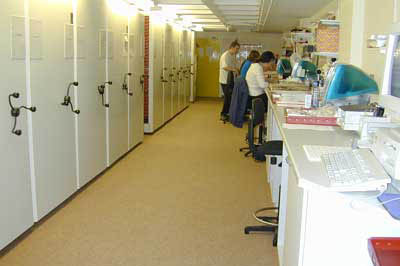
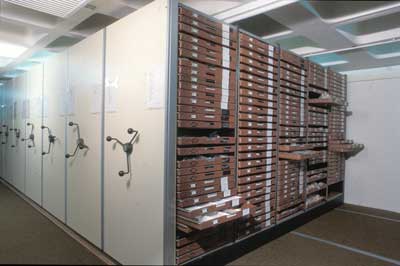
Over 5,000 type, figured and cited lots have already been identified, and 3,300 of these are from the Melvill-Tomlin collection alone. Many have still not been recognised and we estimate there may be up to 10,000 in total. In a recent research project we discovered over 100 previously unrecognised types (Wood & Gallichan, 2008).
The Melvill - Tomlin Collection
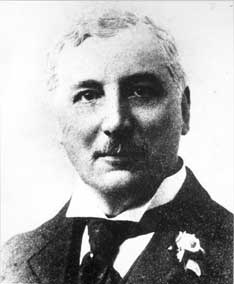 James Cosmo Melvill (1845-1929)
James Cosmo Melvill (1845-1929)This collection was formed by two exceptional collectors and taxonomists, James Cosmo Melvill (1845-1929) and John Read le Brockton Tomlin (1864-1954). The bulk of the Melvill-Tomlin collection was amassed during the "abundant years of conchology" from 1865-1914; it was started by Melvill and then bought by Tomlin, who combined it with his own collection, in 1919. The historical information within the collection is vast and it covers localities all over the world. The massive geographical range was achieved mainly by buying at auctions or from dealers, and by exchanging with other amateur and professional conchologists. Between them they acquired material from over 900 different sources, including expeditions such as ‘Challenger’ and ‘Investigator’. They were both not only wealthy enough to purchase shells but were capable taxonomists highly active in their field, publishing around 400 papers between them.
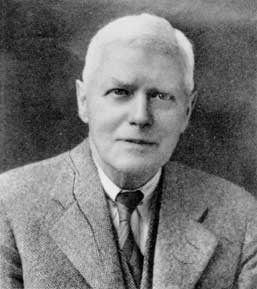
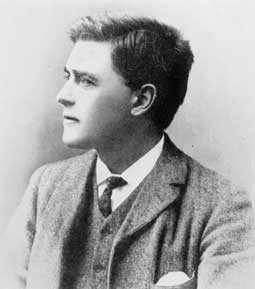
Now that the collection is fully documented and databased we know that it contains some 85,500 lots of shells, making it the second largest privately amassed shell collection in the world.
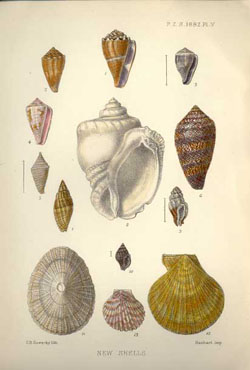 Sowerby 1882, plate 5
Sowerby 1882, plate 5
Tomlin's malacological library was also bequeathed and contains over 2,200 bound volumes and 7,000 reprints or pamphlets, many of which have valuable annotations by authors or associates. It is an exceptional resource which continues to be used by researchers daily. He also collected all of his shell related correspondence, which in itself illustrates the number of people he exchanged and bought material from. These letters help bring to life the social history aspect of shell collecting during this period of time.
The significance of the Melvill-Tomlin collection is threefold. Firstly, due to the amount of taxonomically important material, secondly due to the historical data contained within and thirdly as a world wide reference collection.
For more information on the Melvill-Tomlin collection please go to our main collection web pages..
Research Collections
The stronger geographical areas of the historical collections have been used as a spring board for in-house scientific research and fieldwork, resulting in growing modern research collections
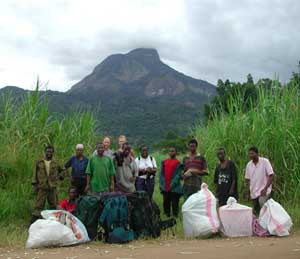
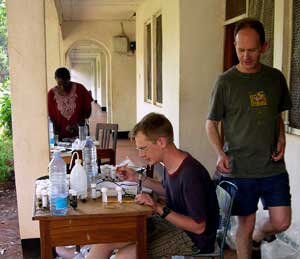
Marine and non-marine molluscs have been collected not only from Britain and adjacent European shores but also the Mediterranean, Hong Kong, Australia, the Red Sea, Arabian Gulf, Gulf of Oman, Indian Ocean, East Africa, West Africa, Madeira, Vancouver and the Irish Sea. These projects have resulted in numerous new species descriptions of which the type specimens have been deposited in our collections.
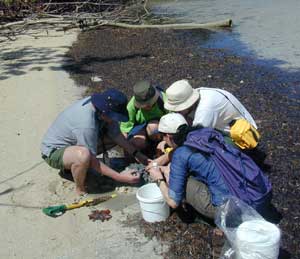

Other Collections
Amgueddfa Cymru – National Museum Wales acquired many other molluscan collections both before and after the donation of the Melvill-Tomlin collection. Here are a few that contain type material:
Dance, S. Peter: A former member of staff of the National Museum of Wales. His collections include shells from Britain, Florida, Borneo and material from the Arabian Sea/Gulf of Oman used for the book Seashells of Eastern Arabia.
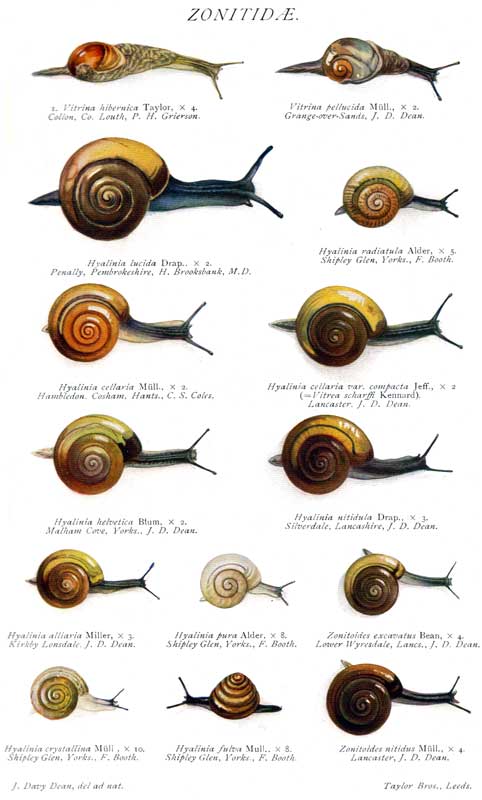
Dean, J. Davy (1876-1937): A curator who worked in the National Museum of Wales from 1915 to 1937. His collection, which he left to the Museum, numbers some 2,000 lots of non-marine mollusca mainly from Europe and Jamaica and is especially rich in the Clausilidae. Obituary in Nautilus, 15: 48.
J. Davy Dean's portrait of Zonitidae in J. W. Taylor’s famous Monograph of the Land and Freshwater Mollusca of the British Isles (1894-1921)Holyoak-Seddon: The non-marine collections of D. T. Holyoak and M. B. Seddon from North Africa, Madeira and Europe numbering approximately 25,000 lots, made from the late 1970s to early 1990s and including much alcohol-preserved material.
Hoyle, William Evans (1855-1926): Click here for more information.
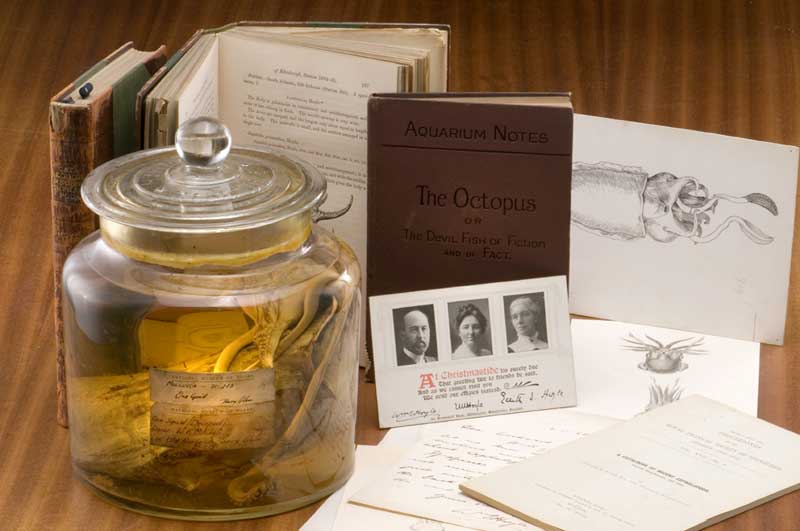 Hoyle collection paraphernalia
Hoyle collection paraphernalia 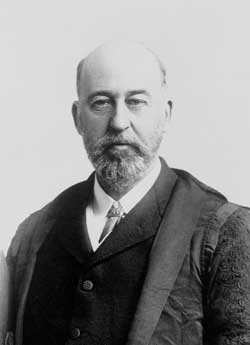
Hoyle, William Evans
Marshall, James Thomas (1842-1922): Collector and conchologist. His non-marine shells are in Nottingham Museum, UK, and his British marine shells are in the National Museum of Wales. The collection contains much material from the Porcupine Expedition and specimens are cited in his series of papers on Additions to the British List. There is also material in the Melvill-Tomlin collection. Obituary in Journal of Conchology, 17: 99-103.
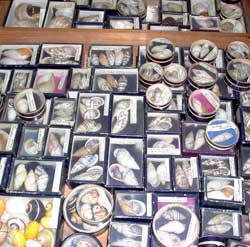
A drawer from Tom Pain’s collection at his house in Rainham
Pain, Tom (1915-2003): In 1981 ca. 2,000 lots of the Pain collection were acquired by the National Museum of Wales. After his death in 2003 the remainder of his collection, containing ca. 4500 lots, was bequeathed to us. The collection is from worldwide localities and includes the Pilidae of G. B. Sowerby 3rd and figured specimens from Alderson’s book Studies in Ampullaria. Obituary in Journal of Conchology, 38 (2): 179-191.
For more information on our collections please refer to our main web pages.
